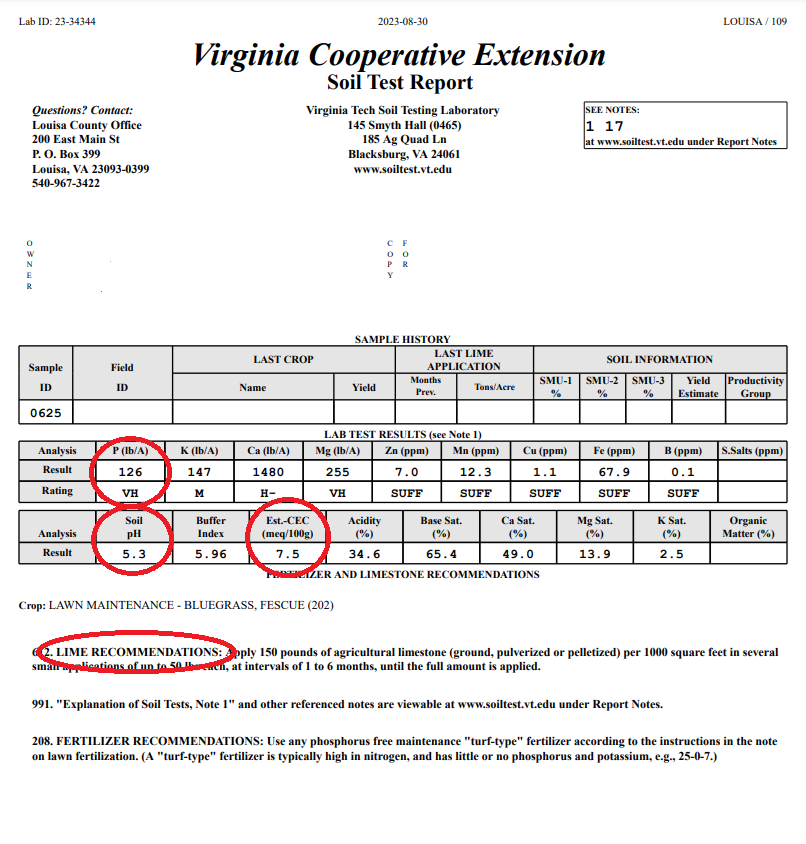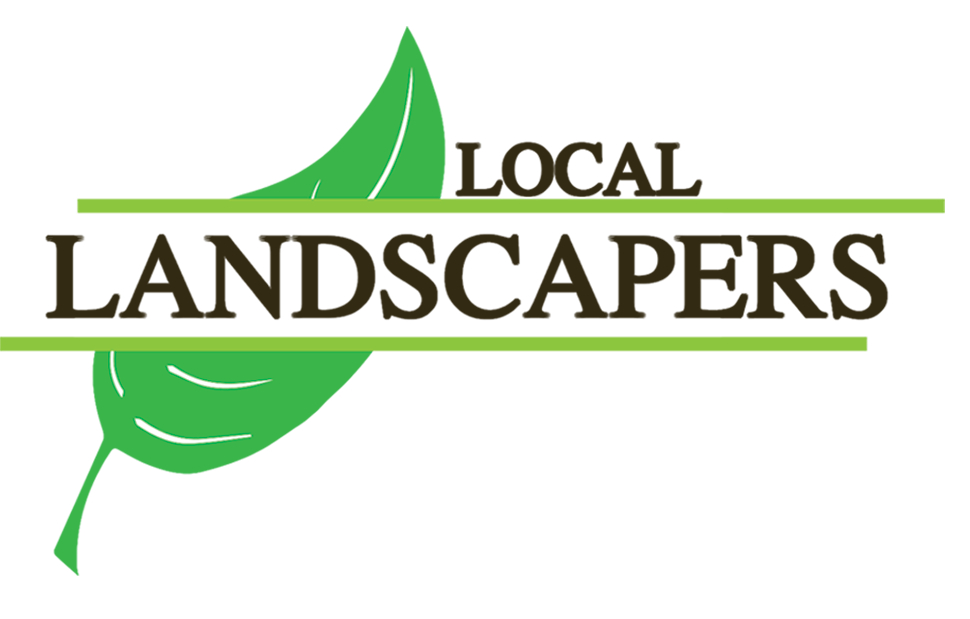Soil Testing and Corrections
Local Landscapers offers comprehensive lawn soil testing for all clients enrolled in our Weed ‘n Feed program, as well as anyone else interested. Growing healthy grass is easier when the soil meets the grass’s needs. This service is available in the Lake Anna area and around Mineral, Bumpass, and Louisa, Virginia.
Soil Testing Service – $65.00
The service includes:
- Collection of soil sample
- Packaging and paperwork completion
- Postage to Virginia Tech Soil Lab
- Fee for Virginia Tech Soil Lab
- Results emailed directly from Virginia Tech
- Review of results by Local Landscapers
- Proposal with recommended amounts and actions
- Soil test results can take between 2 and 4 weeks to recieve back
We are primarily looking at three stats on the soil test.
Phosphorus levels (P)
First we are looking at the Phosphorous (P) levels, this is critical for the root development of your lawn.
-
- They are categorized L, M, H, & VH. These are short for Low, Medium, High, Very High. We are aiming for “H” or “VH”
- If you have signed up for our lawn program and your soil test reads L or M, we will substitute late summer fertilizer and/or fall fertilizing apps with a fertilizer that has phosphorous included.
- If you signed up for our lawn program, there will not be an additional charge for this, no further action is needed
- Phosphorous should only be applied in late summer and fall when root development is highest
Soil pH

Second, we are looking at the soil’s PH (Lime recommendations)
-
- We are aiming for around 6.5-7.0
- Lime is used to raise the PH in the soil, this is important for nutrient availability for the lawn
- Good PH greatly contributes to the effectiveness of fertilizers
- Lime can be applied anytime of the year
The Nutrient Availability Chart is an excellent visual representation showing how the availability of nutrients varies with soil acidity or alkalinity. The pH scale is displayed at the bottom, with 6.5 – 7.0 being the optimal range for most nutrient availability. When the pH is within this range, it’s as if the grass has its mouth wide open, ready to absorb nutrients.
Fertilizers are more efficiently utilized at this pH level, requiring less fertilizer to achieve better results on the lawn. This efficiency leads to reduced leaching and less loss of fertilizers.
Est. CEC (Cation Exchange Capacity)
The third stat we are looking at is the Est.-CEC “Cation Exchange Capacity.” This is how well nutrients bond to the soil before leaching off.
- We are aiming for 10+
- We bring this up by introducing organic matter
- We use a spreadable product called Carbon Pro G. This is effective and more affordable than topdressing with compost.
-
Cation exchange capacity (CEC) is a measure of the soil’s ability to hold and exchange positively charged ions (cations). These cations include essential nutrients like calcium (Ca²⁺), magnesium (Mg²⁺), potassium (K⁺), and ammonium (NH₄⁺). Here’s why CEC is important for your lawn:
Nutrient Retention and Availability: Soils with a high CEC can retain more nutrients and make them available to grass and other plants over time. This means that nutrients are less likely to be leached away by water and more likely to be absorbed by your lawn.
Soil Fertility: High CEC soils are typically more fertile because they can hold more essential nutrients. This leads to healthier, more vigorous grass growth.
Soil pH Buffering: Soils with higher CEC can better buffer changes in pH, maintaining a more stable environment for nutrient availability. This stability is crucial for optimal lawn health, as extreme pH levels can limit nutrient uptake.
Improved Fertilizer Efficiency: With a higher CEC, fertilizers are used more efficiently, as the soil can hold and release nutrients as needed by the plants. This efficiency reduces the amount of fertilizer required and minimizes environmental impact.
Water Retention: Soils with higher CEC often have better water-holding capacity, which helps maintain soil moisture levels and supports healthy grass growth during dry periods.

Soil Test
..Here is an example of a soil test. I have circled the information that we outlined above. This particular lawn has high phosphorus levels, low pH and low Est. CEC levels.
The lower circle indicates the lime recommendation, advising 150 pounds of lime per 1,000 square feet of lawn. For a 20,000 square foot lawn, this means applying 3,000 pounds of lime. This should be done in smaller applications of 50 pounds each, resulting in 3 applications of 1,000 pounds each, spaced at least 1 month apart.
For the Est. cation exchange capacity, we would recommend to start with two applications of Carbon Pro G.





